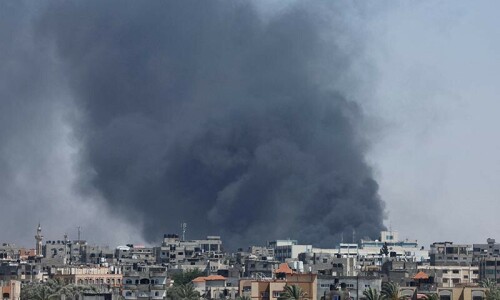
How many of you love the cosmos, the twinkling and the shooting stars that take your breath away? If your answer is ‘I’, then I am also one such person who would gaze at the night sky as a child, and remain captivated by the mesmerising tiny twinkling stars up above for hours. They were so enchanting that I would often wonder how they produced different lights in the sky, some yellowish, some bluish, but mostly silvery white.
My keen interest in the cosmos led me to read more about it, and that’s where I discovered a lot of unusual phenomena, unbelievable facts and about the truly awesome Northern Lights — Aurora Borealis or the dancing colourful lights that spread across the night sky in Arctic regions.
True to their immense beauty, they are not an easy catch for many people like me, because this light show occurs in the polar regions, particularly in the high-latitude areas of the northern hemisphere. However, modern technology has provided us with alternatives to relish the beauty of this celestial spectacle from the comfort of our homes. Numerous online platforms and websites feature live streams and time-lapse videos of the Northern Lights, allowing enthusiasts to virtually experience the magic in real-time.
The vibrant colours, swirling patterns and otherworldly beauty make Arora Borealis a truly awe-inspiring sight to behold. Whether it’s through scientific understanding, cultural significance, or artistic inspiration, the northern lights continue to captivate the human imagination. I am sure many of you have seen the pictures of Aurora Borealis, and have been captivated by this unusual show of shimmering colourful lights.
Therefore, many of you would be wondering how these colourful waves of lights occur in the night sky. The simple answer is that they are formed when charged particles — also known as the solar wind, which are constantly flowing from the sun and contain charged particles like electrons and protons —collide with the gases in the Earth’s atmosphere, such as oxygen and nitrogen, they create a stunning array of colours in the night sky.
The appearance of the Northern Lights In most pictures that we see, the colours are vivid greens to shimmering reds, and rarely purple.
In time-lapse videos, we can easily notice these colourful lights flicker and change shape, creating an ethereal display and interestingly, the patterns and shapes are created by the Earth’s magnetic field.
For instance, the charged particles from the solar wind interact with Earth’s magnetic field (which is strongest near the poles), and follow the magnetic field’s lines, they create intricate and mesmerising patterns in the sky. Sometimes, the Northern Lights can take on the amazing natural shapes of arcs, loops or even spirals.
The colours
All the hues of green, blue, yellow, orange, red, etc., depend on the type of gas molecules, the charged particles, they collide with. For instance, oxygen molecules produce green and red lights, while nitrogen molecules produce blue and purple lights. Besides, the altitude at which the collision occurs also affects the colours of the northern lights. Green lights tend to occur at lower altitudes, while red lights occur at higher altitudes.
Where to catch the magic?
Many people cannot witness the lights live, because they occur at places near the North Pole, like Alaska, Canada, Scandinavia and Iceland. These are the best spots because they’re in a ring-shaped area around the North Pole, where the northern lights happen a lot. But the occurrence of the lights can be different, depending on the sun’s activity, the weather and how much light there is from cities. Usually, the best time for the northern lights to occur is the winter when nights are longer and darker.
Northern Lights is a celestial spectacle that captivates the hearts and souls of those who witness it. So even if you’re not standing under the shimmering lights, you can experience the magic virtually through your TV or computer screens as they will continue to captivate humanity for the years to come.
Published in Dawn, Young World, December 30th, 2023













































Dear visitor, the comments section is undergoing an overhaul and will return soon.